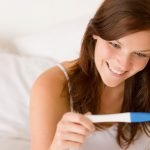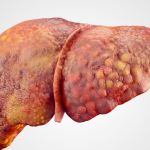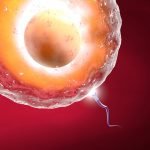Alopecia in Menopause
Tolle Causam
Andrea Purcell, NMD
Alopecia that occurs in menopause is really a type of late-onset Female-Pattern Hair Loss (FPHL), which occurs in approximately 50% of women by the age of 50 years old.1 FPHL can be broken down into 2 categories: early onset (20-30 years old) and late onset (40-60 years old).
In this article, the underlying causes of menopause-induced alopecia will be explored, along with proper laboratory evaluation and treatment considerations for these patients. Early intervention is key in preventing miniaturization of the hair follicles.
Menopausal Alopecia
In the smorgasbord of menopausal signs and symptoms, alopecia is extremely common yet often overlooked. This is because it can occur at the onset of perimenopause but more often occurs 5-10 years into menopause. This delay often stumps patients and practitioners alike.
As mentioned, early intervention is important. The longer the condition continues, the more invasive the treatment usually has to be. I encourage all women to act as soon as they think they are losing more hair than is normal. A watch-and-wait approach reduces the chance of achieving success with less invasive approaches.
Hair growth occurs in 3 phases, including the resting phases (catagen and telogen) and the growth phase (anagen). With age, anagen phase-time generally decreases, while time spent in the resting phases increases. When age-related changes are combined with hormone-induced changes, hair loss tends to intensify.
Two well-known causes of abrupt hair loss are exposure to acute stress and surgery. These can trigger a type of hair loss called telogen effluvium. It is common for women to experience hair loss 2-4 months after a stressful life event or surgical procedure. In this scenario, the delay between the stressor and the onset of symptoms can prevent the patient from connecting the dots as to the cause of her hair loss.
Along with stress, alopecia can be triggered by genetics, inflammation, and hormonal imbalances. All of these will be discussed, with the main focus being placed on hormones.
Patient Workup
Hair Loss Specific Questions
- When did you start to notice that your hair was falling out?
- Where do you notice the most hair loss occurring?
- When you run your hand through your hair how many hairs typically come out in your hand?
- Does your hair loss seem to cycle, or has it been the same amount over the last few months?
- Is it falling out at the root, or is it breaking and splitting off?
- Do the individual hairs that are falling out appear thinner than they once were?
- Have you seen any new growth?
Physical Exam & Lab
Physical exam should include a visual inspection of the scalp and the specific areas of concern. Common areas of loss include temples and frontal area, crown of head, or a more diffuse pattern of generalized loss throughout the scalp. Look for a thinning of the hair follicles (minimization or miniaturization) and increased scalp exposure (decreased density of follicles).
Normal hair loss is 50-100 hairs/day. Women with hair disorders can lose 200-400 strands per day. I ask women to collect their falling hair over a 24-hour period in a zip-lock bag and to count the strands. That establishes a baseline, allowing for effective follow-up after treatment.
Table 1. Laboratory Evaluation
| Category | Lab Marker or Comment |
| Thyroid | TSH, free T3, free T4, reverse T3, anti-TPO and anti-TG autoantibodies |
| Sex hormones | Estradiol, progesterone, free & total testosterone, dihydrotestosterone |
| Salivary cortisol | Multiple samples collected over the course of a day are required to evaluate a proper rhythm |
| Minerals | Zinc, copper, selenium, iron (iron panel, including ferritin), manganese |
| Vitamins | Vitamin B12, folic acid |
| General | CBC, chemistry panel |
(TSH = thyroid-stimulating hormone; TPO = thyroid peroxidase; TG = thyroglobulin; CBC = complete blood count)
Treatment Considerations
- Thyroid
- Both hyper- and hypothyroid states can affect hair follicles and trigger alopecia. About 26% of women in perimenopause are diagnosed with hypothyroidism.2
- A diagnosis of autoimmune thyroid can further compound the diagnosis of alopecia, thus should be addressed.
- Elevated reverse T3 may indicate elevated cortisol levels, and should be confirmed with the salivary testing.3
Sex Hormones & Cortisol
Menopausal alopecia is the result of a slow decline in hormone output. Typically, a woman stops menstruating, becomes free of hot-flashes, and assumes she is finished with menopause. However, the slow, insidious decline of estrogen and progesterone typically occurs over time as ovarian function diminishes.
Both estrogen and progesterone play a role in hair follicle health. Estrogen promotes hair growth in the anagen phase, leading to thicker, healthier, faster-growing hair.4 Progesterone inhibits 5-alpha reductase, thereby blocking the negative effect of testosterone on the hair follicles.5
Conversely, there may be a gradual increase of testosterone and adrenal hormones (cortisol), which promote an androgen-induced alopecia. Androgens bind to hair follicles and force them to go into the telogen resting phase sooner than is normal.6 Androgens shrink hair follicles, causing new hairs to grow back thinner with each growth cycle. Over time, this can ultimately lead to follicle death.
If serum testosterone is elevated but does not decline with treatment over a reasonable period of time (3-6 months), then additional follow-up evaluation for a testosterone-producing tumor of either the adrenal or ovary should be conducted. Tumors, although rare, do occur and the author has diagnosed 2 in her career thus far. If testosterone is converting to dihydrotestosterone (DHT), then 5-alpha reductase inhibitors should be considered. Commonly used 5-alpha reductase inhibitors include: Serenoa repens (saw palmetto), Urtica dioica (stinging nettle root), and green tea catechin (epigallocatechin gallate). An increase in DHT is seen in true cases of androgenic alopecia, genetically linked female pattern hair loss, and polycystic ovarian syndrome (PCOS).7 Elevated DHT is less common in menopausal alopecia.
Many physiologic states can be evaluated with a cortisol rhythm. Elevated cortisol is suggestive of ongoing stress and a “progesterone steal” situation whereby progesterone is converted into cortisol. Both stress8 and low progesterone contribute to hair loss.9
Topical Scalp Treatments
Minoxidil
Minoxidil is the most common FDA-approved topical application for androgenic alopecia. The proposed mechanisms of action include increasing vasodilation, increasing dermal papilla cells within the hair follicle, slowing senescence of keratinocytes, and enhancing cellular proliferation.10,11 Because of these multiple mechanisms of action, it can also be effective for age-associated, non-androgenic alopecia.12
Studies show hair re-growth peaking at 1 year and new non-vellus hairs being maintained at 4 years with continual use of minoxidil.13 The most efficacious potency is 5% minoxidil. Be aware that the 2% concentration is marketed to women while the 5% concentration is marketed to men. I recommend that women use the men’s strength. There is some debate about whether minoxidil simply stops the hair loss or if it also assists in re-growing hair.14 Therefore, minoxidil should not be relied upon as a standalone therapy.
Melatonin
Positive studies of topical melatonin demonstrate increased skin cell growth and support of the anagen growth phase of the hair follicle. The studied dose is generally 0.1% daily. Plasma measurements have shown that melatonin penetrates the skin and enters the systemic circulation.15,16
Rosemary Essential Oil
Topical Rosmarinus officinalis (rosemary) has been shown to enhance circulation in the scalp.17 One study combined rosemary essential oil with minoxidil.18 The authors noted a decline in the minoxidil side effects of itching and scalp irritation. Rosemary may also have anti-androgenic effects.18,19
Low-Level Laser Therapy (LLLT)
LLLT has shown to be helpful in more advanced cases and especially when there is a genetic link to a woman’s female-pattern hair loss. LLLT has the ability to stimulate epidermal stem cells out of the resting phase into the growth phase.20-23
Table 2. Compounded Topical Scalp Solution #1
| Ingredient | Mechanism |
| Minoxidil 5% | (see text) |
| Tretinoin 0.01% | Provides a 3-fold increase in minoxidil absorption |
| Betamethasone 0.05% | Decreases inflammation caused by tretinoin and minoxidil |
| Melatonin 0.1% | (see text) |
Dose: 1 mL applied to scalp at bedtime
Table 3. Compounded Topical Scalp Solution #2
| Ingredient | Comment |
| Minoxidil 5% | |
| Melatonin 0.1% | |
| Rosemary essential oil (1 gtt per dose) | Add 1 gtt of rosemary essential oil to each 1 mL dose and massage into scalp |
Dose: 1 mL applied to scalp at bedtime
Summary
Treatment of Menopausal Alopecia
- Topical scalp solution
- Hormone rebalancing
- Bioidentical hormone replacement of estrogen and progesterone, if indicated
- Reduction of testosterone, if necessary
- Promotion of aromatase, and use of 5-alpha reductase inhibitors as needed
- Nutritional and mineral replacement
- B-complex, methylcobalamin, biotin24
- Trace minerals
- Collagen and/or L-lysine
Currently, there is not much research supporting collagen supplementation and hair re-growth. However numerous studies are underway to determine if ingestion of collagen offsets the effects of aging on hair follicles. Collagen production relies on 4 amino acids: lysine and methionine (essential), glycine and proline (non-essential). There is research supporting a link between low lysine status and hair loss in women.25
- Adrenal function support – This helps to normalize stress responses and promote a balanced progesterone level by reducing demands on cortisol
- Self-care and stress management counseling
- Low-level laser therapy, if appropriate
To conclude, alopecia affects a significant number of menopausal women. Hair loss experienced at any point in a woman’s life is nothing less than devastating. Too often it is perceived as a vanity complaint and not given the attention that it deserves. A proactive approach started early on will provide peace of mind immediately, and symptom relief gradually, over a 3-12-month period.
References:
- Olsen EA. Female pattern hair loss. J Am Acad Dermatol. 2001;45(3 Suppl):S70-S80.
- Massoudi MS, Meilahn EN, Orchard TJ, et al. Prevalence of thyroid antibodies among healthy middle-aged women. Findings from the thyroid study in healthy women. Ann Epidemiol. 2005;5(3):229-233.
- van den Beld AW, Visser TJ, Feelders RA, et al. Thyroid hormone concentrations, disease, physical function and mortality in elderly men. J Clin Endocrinol Metab. 2005;90(12):6403-6409.
- Riedel-Baima B, Riedel A. Female pattern baldness may be triggered by low oestrogen to androgen ratio. Endocr Regul. 2008;42(1):13-16.
- Burke KE. Hair loss. What causes it and what can be done about it. Postgrad Med. 1989;85(6):52-58, 67-73, 77.
- Lee MJ, Cha HJ, Lim KM, et al. Analysis of the microRNA expression profile of normal human dermal papilla cells treated with 5α-dihydrotestosterone. Mol Med Rep. 2015;12(1):1205-1212.
- Rossi A, Iorio A, Di Nunno D, et al. Conditions simulating androgenetic alopecia. J Eur Acad Dermatol Venereol. 2015;29(7):1258-1264.
- Thom E. Stress and the Hair Growth Cycle: Cortisol-Induced Hair Growth Disruption. J Drugs Dermatol. 2016;15(8):1001-1004.
- Cassidenti DL, Paulson RJ, Serafini P, et al. Effects of sex steroids on skin 5 alpha-reductase activity in vitro. Obstet Gynecol. 1991;78(1):103-107.
- Proctor PH. Endothelium-derived relaxing factor and minoxidil: Active mechanisms in hair growth. Arch Dermatol. 1989;125(8):1146.
- Rossi A, Cantisani C, Melis L, et al. Minoxidil use in dermatology, side effects and recent patents. Recent Pat Inflamm Allergy Drug Discov.2012;6(2):130-136.
- Goren A, Castano JA, McCoy J, et al. Novel enzymatic assay predicts minoxidil response in the treatment of androgenetic alopecia. Dermatol Ther. 2014;27(3):171-173.
- Olsen EA, Dunlap FE, Funicella T, et al. A randomized clinical trial of 5% topical minoxidil vs 2% topical minoxidil and placebo in the treatment of androgenetic alopecia in men. J Am Acad Dermatol. 2002;47(3):377-385.
- Singal A, Sonthalia S, Verma P. Female pattern hair loss. Indian J Dermatol Venereol Leprol. 2013;79(5):626-640.
- Fischer TW, Trueb RM, Hanggi G, et al. Topical melatonin for treatment of androgenetic alopecia. Int J Trichology. 2012;4(4):236-245.
- Fischer TW, Burmeister G, Schmidt HW, Elsner P. Melatonin increases anagen hair rate in women with androgenic alopecia or diffuse alopecia: results of a pilot randomized controlled trial. Brit J Dermatol. 2004;150(2):342-345.
- Begum A, Sandhya S, Shaffath Ali S, et al. An in-depth review on the medicinal flora Rosmarinus officinalis (Lamiaceae). Acta Sci Pol Technol Aliment. 2013;12(1):61-73.
- Panahi Y, Taghizadeh M, Marzony ET, Sahebkar A. Rosemary oil vs minoxidil 2% for the treatment of androgenetic alopecia: a randomized comparative trial. Skinmed. 2015;13(1):15-21.
- al-Sereiti MR, Abu-Amer KM, Sen P. Pharmacology of rosemary (Rosmarinus officinalis Linn.) and its therapeutic potentials. Indian J Exp Biol. 1999;37(2):124-130.
- Avram MR, Rogers NE. The use of low-level light for hair growth: Part I. J Cosmet Laser Ther. 2009;11(2):110-117.
- Leavitt M, Charles G, Heyman E, Michaels D. HairMax LaserComb laser phototherapy device in the treatment of male androgenetic alopecia: A randomized, double-blind, sham device-controlled, multicentre trial. Clin Drug Investig.2009;29(5):283-292.
- Munck A, Gavazzoni MF, Trueb RM. Use of low level leaser therapy as monotherapy or concomitant therapy for male and female androgenetic alopecia. Int J Trichology. 2014;6(2):45-49.
- Zarei M, Wikramanayake TC, Falto-Aizpurua L, et al. Low level laser therapy and hair regrowth: an evidence-based review. Lasers Med Sci. 2016;31(2):363-371.
- Famenini S, Goh C. Evidence for supplemental treatments in androgenetic alopecia. J Drugs Dermatol. 2014;13(7):809-812.
- Rushton DH, Norris MJ, Dover R, Busuttil N. Causes of hair loss and the developments in hair rejuvenation. Int J Cosmet Sci. 2002;24(1):17-23.
Image Copyright: <a href=’https://www.123rf.com/profile_ipopba’>ipopba / 123RF Stock Photo</a>
 Andrea Purcell, NMD, graduated from Southwest College of Naturopathic Medicine in 2002. She is the founder of Portal to Healing Naturopathic Clinic, with locations in Costa Mesa, CA, and Phoenix, AZ. She has a women’s specialty practice focusing on hormones, digestion, and mystery illness. She is the author of Feed Your Cells!: 7 Ways to Make Health Food Fast, Easy, and Gluten Free.
Andrea Purcell, NMD, graduated from Southwest College of Naturopathic Medicine in 2002. She is the founder of Portal to Healing Naturopathic Clinic, with locations in Costa Mesa, CA, and Phoenix, AZ. She has a women’s specialty practice focusing on hormones, digestion, and mystery illness. She is the author of Feed Your Cells!: 7 Ways to Make Health Food Fast, Easy, and Gluten Free.









